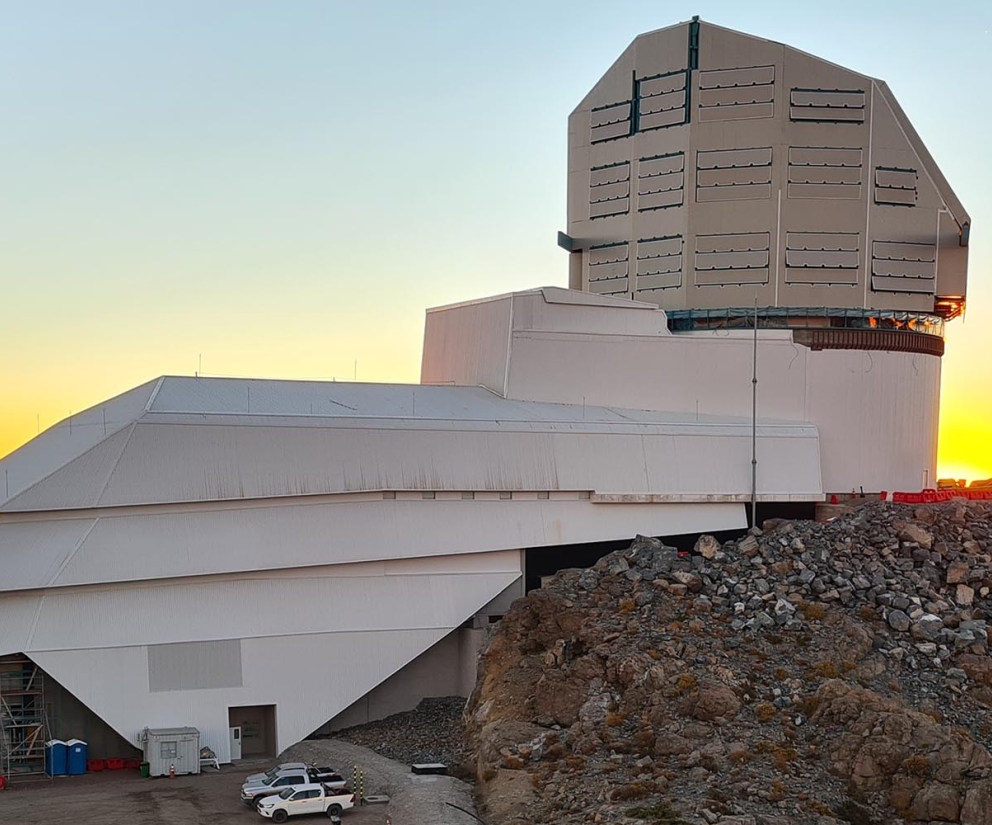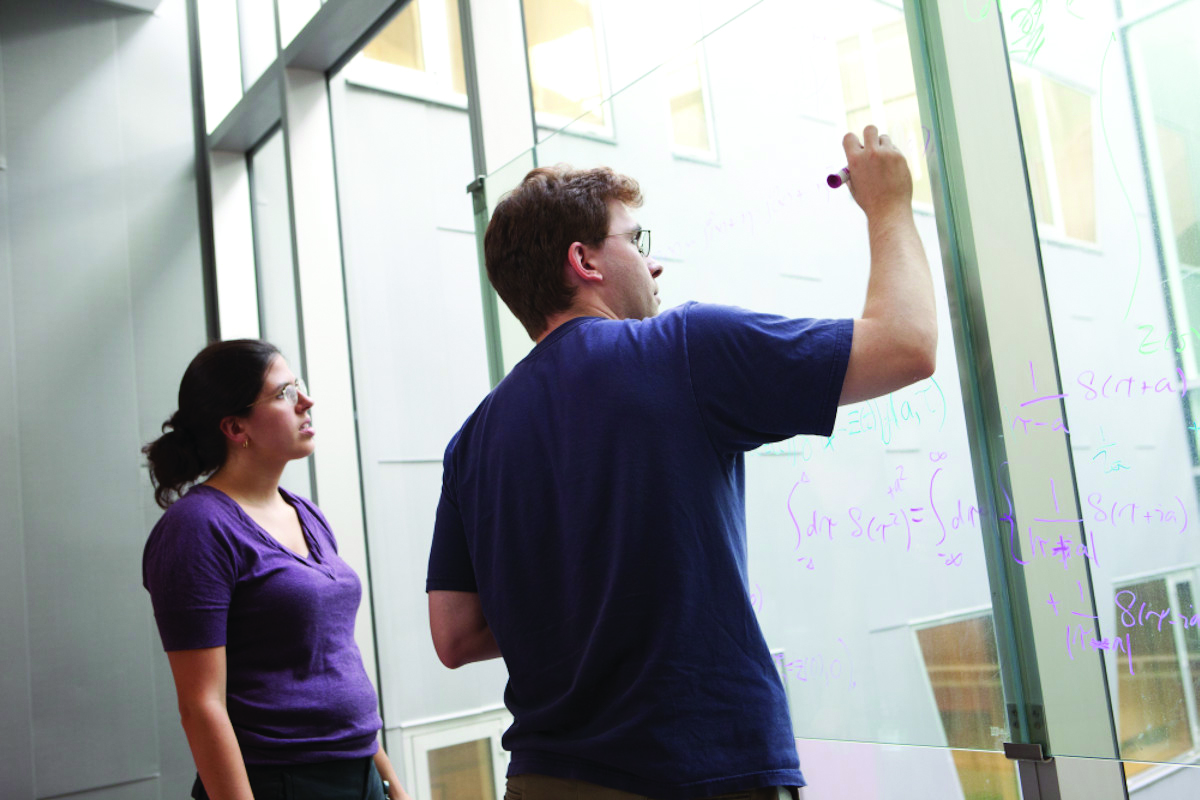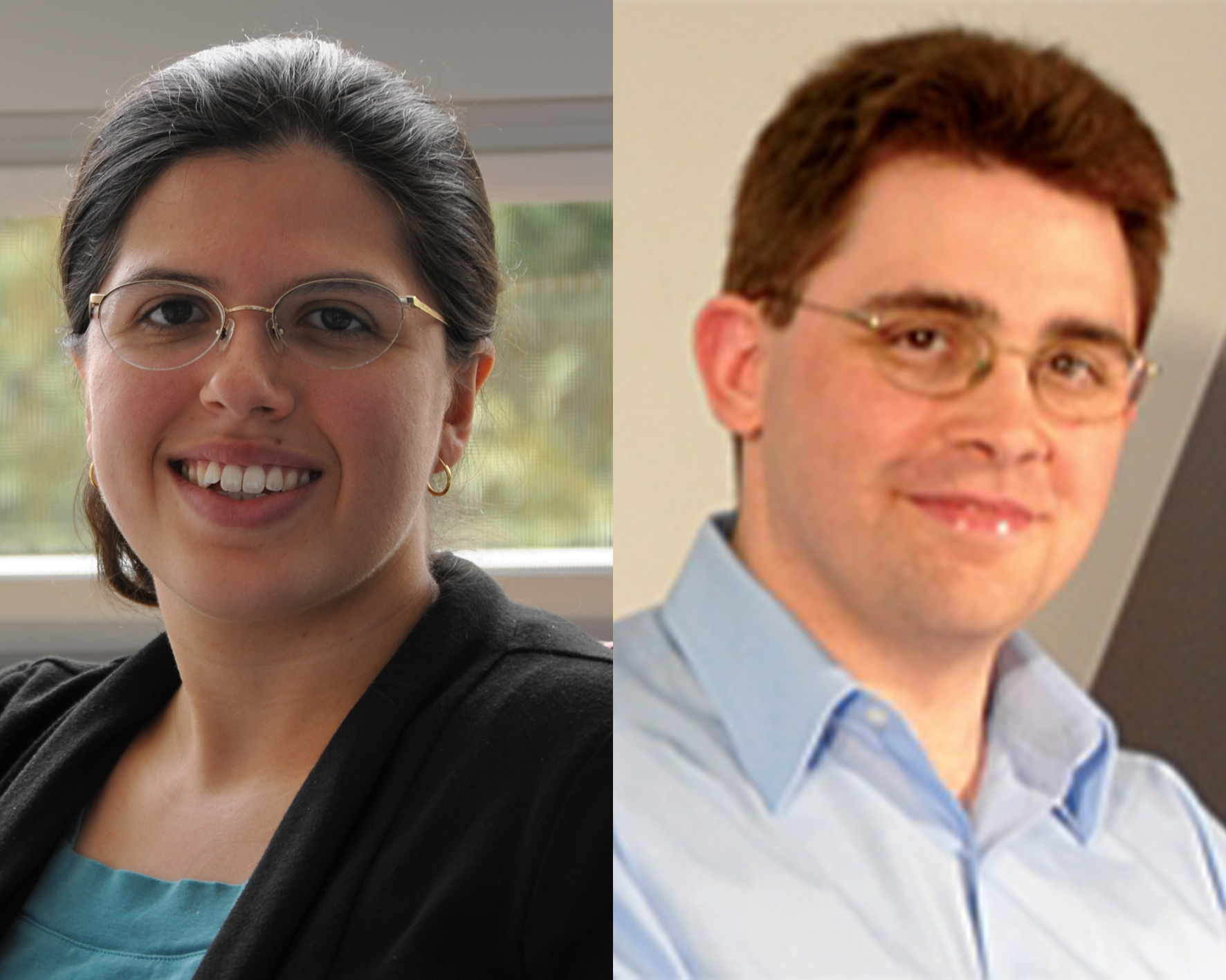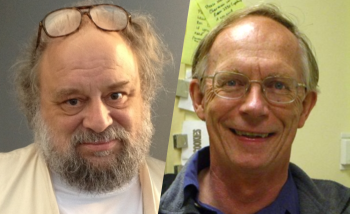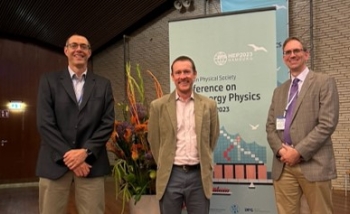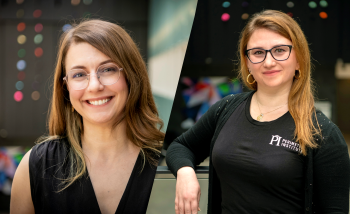Schuster and Toro awarded New Horizons Prize
Two Perimeter faculty members, Philip Schuster and Natalia Toro, have joined the constellation of rising stars recognized by the New Horizons in Physics Prizes. The prizes recognize young theorists who are “dedicated to advancing our knowledge of the universe at the deepest level.”
It’s the third year in a row that Perimeter faculty members have won a New Horizons Prize. Last year’s winners included Freddy Cachazo for his pioneering work on scattering amplitudes; two years ago, Davide Gaiotto was among the inaugural winners for his work on quantum field theories.
Schuster and Toro – particle physicists who often work as a pair – were honoured for their groundbreaking approach to new physics searches at the Large Hadron Collider (LHC), and for spearheading new experimental searches for dark matter and unknown forces.
“It is amazing to be here,” said Schuster, reached by phone at the Breakthrough Prize symposium in Stanford. “We met people who are changing the way we treat Parkinson’s or think about mathematics. There is so much happening.”
“I walked away humbled,” Schuster continued. “I feel as if I need to up my game. It was impressive to see all the things that have been done, across the sciences. It was inspiring to hear about the work and to meet the people. It motivates me to do more.”
Toro agreed: “I’m surrounded by people who are really advancing knowledge – as we do, when we can – and that’s the real reward here. In our case, we’re being recognized for work that is just the beginning of something, whose potential can only be realized by a much larger group of people over a much longer time. It’s exciting to be at the beginning. We’ll see what we learn next.”
“This recognition of Philip and Natalia’s work is thoroughly deserved,” said Perimeter Director Neil Turok. “They have brought a clarity and focus to research in high-energy physics which is both rare and very valuable to the field.”
The work for which Toro and Schuster are being recognized began when they were PhD students. It was just before the Large Hadron Collider was turned on, and dozens of models of new physics – supersymmetric models, little Higgs models, Technicolor models – all competed for experimental testing. Each predicted new particles whose expected masses and other properties depended intricately on the details of each particular model. The result was a tangled thicket of predictions, with no clear way forward.
Schuster and Toro cut through the brambles. They inverted the puzzle of telling the difference between models by asking a deeper question: Why do we need models? What actually matters for deducing the broad outline of a theory from data?
By exploring these questions with fresh eyes and rigour, Toro and Schuster discovered that the essential phenomenology of new physics at hadron colliders is controlled by only a few key variables. This led to the development of the “simplified models” framework.
Schuster and Toro both marshalled the theoretical community and worked directly with experimentalists to see the framework completed and then implemented. LHC experiments now use the simplified model framework to plan searches, analyze data, and share results.
Asking deeper questions – as they had when developing simplified models – and then engaging with experiment became typical of the way Toro and Schuster work. It’s an unusual approach.
“Particle physics for the last 40 years got into this mode of constructing ‘top-down’ models and leaving it to experimentalists to figure out how to test them,” says Turok. “Philip and Natalia took a totally different ‘bottom-up’ approach, based on understanding the full potential of collider experiments and what they might be capable of seeing.”
As postdocs, the pair turned to the question of fundamental forces. There are four known forces: gravity, electromagnetism, the strong force, and the weak force. But are those forces, and their known force carriers, all there is, or just one corner of a broader picture? This is the deeper question Toro and Schuster posed. Along with collaborators, they proposed an elegant set of experiments to find out.
This opened a new subfield. Hundreds of scientists are searching for new forces and for dark matter through a dozen different high-energy and nuclear physics experiments. Schuster and Toro themselves have helped bring three experiments from the blackboard to the beamline: APEX, of which they are spokespeople, as well as HPS and BDX, of which they are founding leaders.
This approach to particle physics is complementary to that pursued at the LHC, and every bit as fundamental. Anything they discover will be paradigm-shifting, with lasting impact on our understanding of the limits of the Standard Model.
Schuster and Toro continue to pioneer new ideas, developing a model of long-range forces mediated by continuous spin particles, or CSPs. CSPs are an exotic brand of possible particle that have long been assumed to be irrelevant to the real world, but Schuster and Toro – characteristically – questioned that assumption. Their developing work suggests that CSPs may be consistent as force-carriers, raising the possibility that known forces could be mediated by CSPs.
It’s a path on which they are just starting out, but it has the potential to change the way we understand both electromagnetism and gravity.
“Natalia and Philip are remarkable young physicists,” says Turok. “It’s no exaggeration to say they have changed the way particle physics is done. They may yet change more than that. We at Perimeter are very proud both of their achievements and their promise for the future.”
Further exploration
About PI
Perimeter Institute is the world’s largest research hub devoted to theoretical physics. The independent Institute was founded in 1999 to foster breakthroughs in the fundamental understanding of our universe, from the smallest particles to the entire cosmos. Research at Perimeter is motivated by the understanding that fundamental science advances human knowledge and catalyzes innovation, and that today’s theoretical physics is tomorrow’s technology. Located in the Region of Waterloo, the not-for-profit Institute is a unique public-private endeavour, including the Governments of Ontario and Canada, that enables cutting-edge research, trains the next generation of scientific pioneers, and shares the power of physics through award-winning educational outreach and public engagement.

